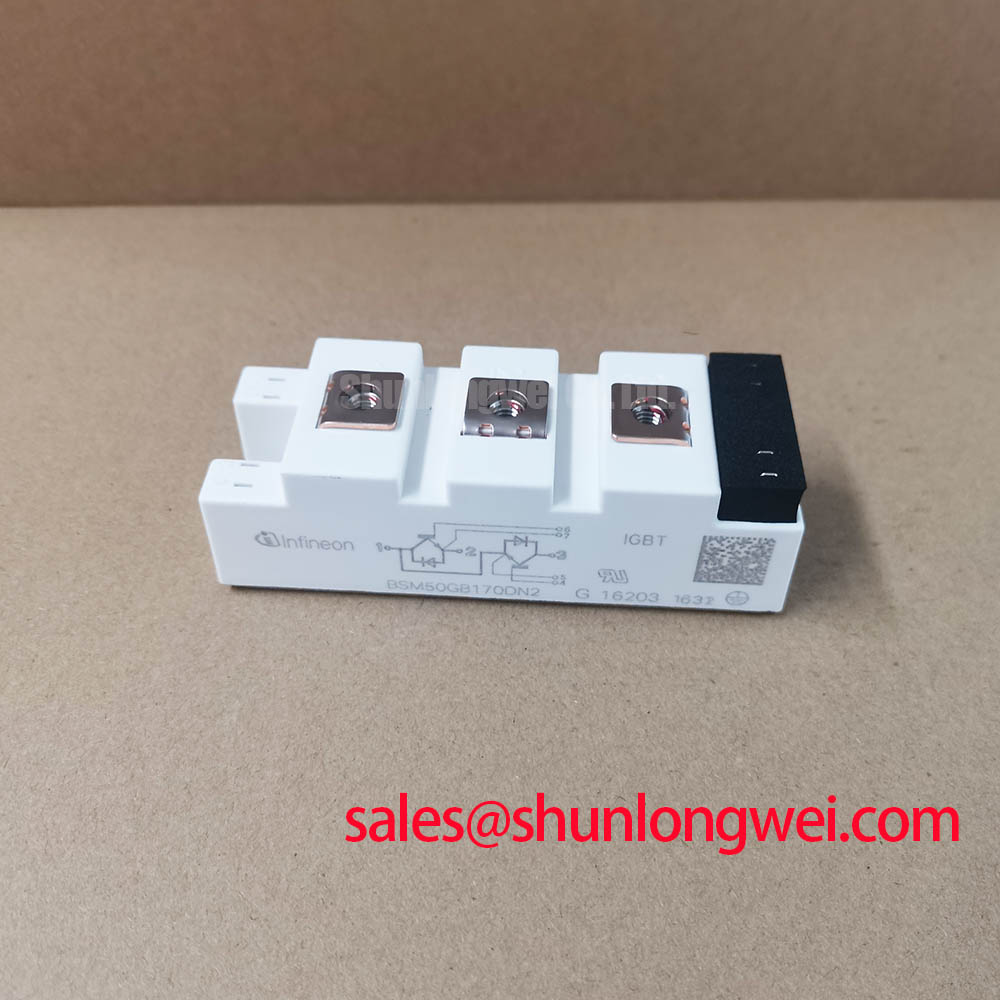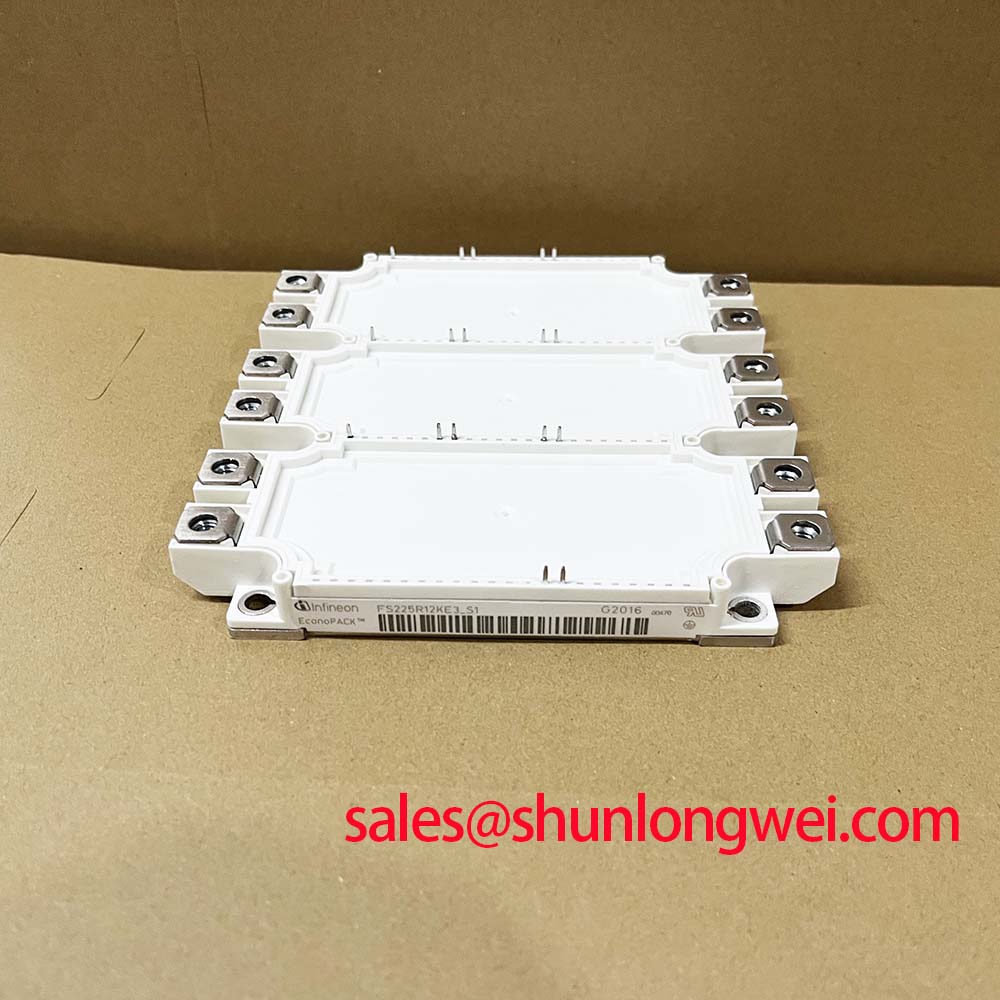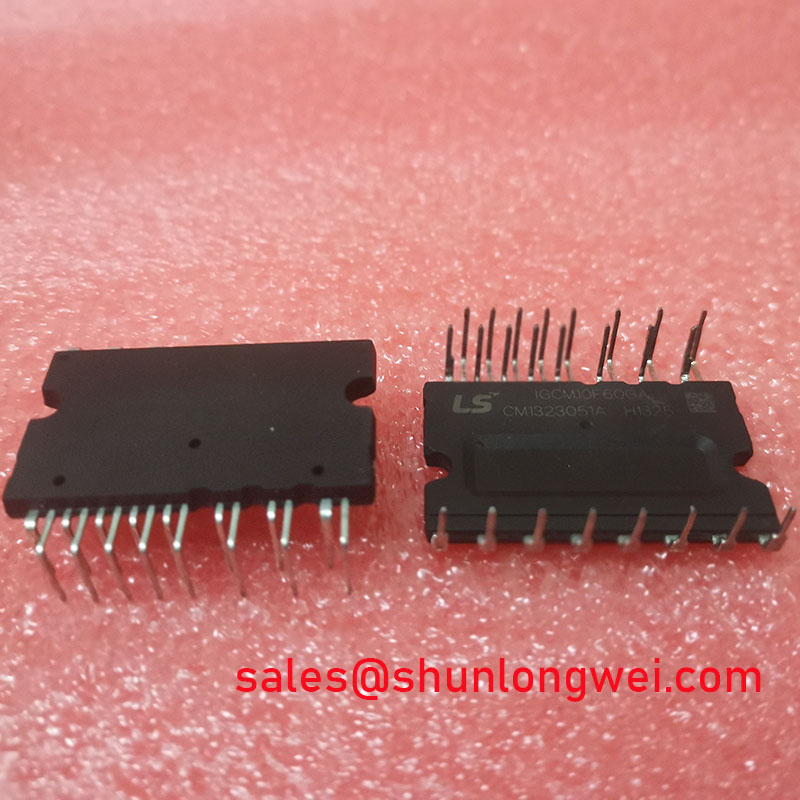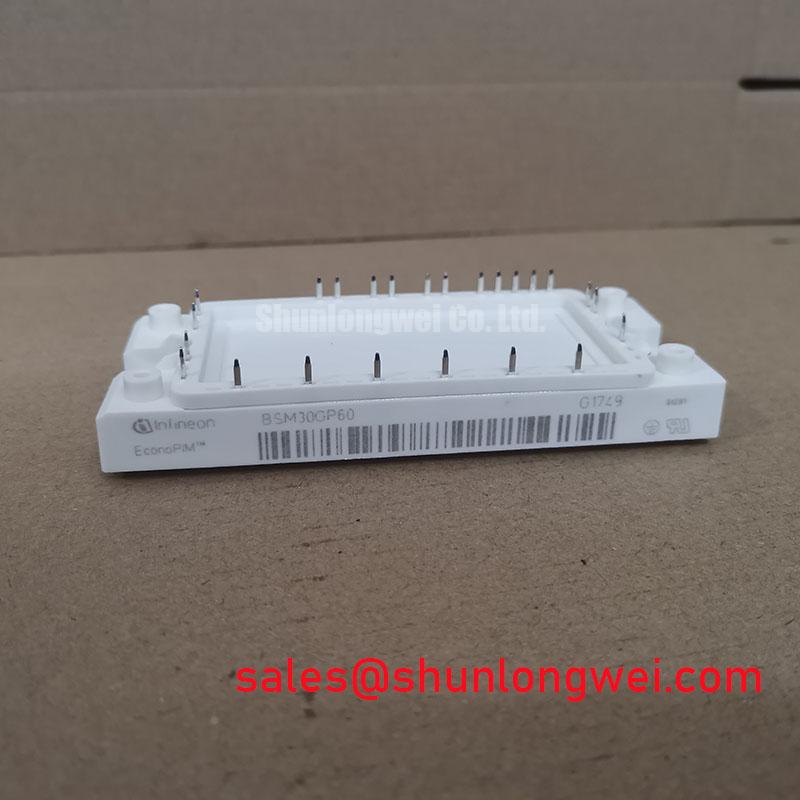Content last revised on October 16, 2025
BSM50GB170DN2 | 1700V 50A Half-Bridge IGBT Module Analysis
The Infineon BSM50GB170DN2 is an EconoPACK™ 2 half-bridge IGBT module designed to deliver robust power switching for high-voltage industrial systems with a dedicated focus on thermal reliability and operational safety. This module integrates two IGBTs in a half-bridge configuration, featuring key specifications of 1700V | 50A | VCE(sat) 2.10V (typ). Key engineering benefits include enhanced thermal protection via an integrated NTC thermistor and a high voltage safety margin for demanding applications. It provides the necessary voltage headroom for reliable operation in power inverters connected to 690V AC mains. Best fit for medium-power 690V industrial drives where direct temperature monitoring is critical for system longevity.
Key Parameter Overview
Decoding Electrical and Thermal Specs for Robust System Design
The technical specifications of the BSM50GB170DN2 are foundational to its performance in high-voltage environments. The parameters below have been selected to provide engineers with a clear view of its capabilities, particularly concerning its thermal behavior and switching characteristics. Highlighting these values supports critical design decisions, from heatsink selection to gate drive optimization.
| Parameter | Symbol | Condition | Value |
|---|---|---|---|
| Collector-Emitter Voltage | VCES | Tvj = 25°C | 1700 V |
| Continuous Collector Current | IC nom | 50 A | |
| Repetitive Peak Collector Current | ICRM | tP = 1 ms | 100 A |
| Collector-Emitter Saturation Voltage | VCE sat | IC = 50 A, VGE = 15 V, Tvj = 25°C | 2.10 V (typ.) |
| Gate-Emitter Threshold Voltage | VGE(th) | IC = 2.0 mA, VCE = VGE, Tvj = 25°C | 5.8 V (typ.) |
| Total Power Dissipation | Ptot | TC = 25°C, Tvj max = 150°C | 350 W |
| Short Circuit Withstand Time | tPSC | VGE ≤ 15 V, VCC = 1000 V, Tvj max = 150°C | 10 µs |
| Thermal Resistance, Junction-to-Case | RthJC | per IGBT | 0.36 K/W |
| NTC Thermistor Resistance | R25 | TC = 25°C | 5 kΩ ± 5% |
Download the BSM50GB170DN2 datasheet for detailed specifications and performance curves.
Application Scenarios & Value
System-Level Benefits in High-Voltage Motor Drives and Power Converters
The BSM50GB170DN2 is engineered for power conversion systems where high DC link voltage and long-term reliability are paramount. Its robust 1700V rating makes it a natural fit for applications operating directly from Variable Frequency Drive (VFD) systems connected to 690V AC industrial mains.
Consider the engineering challenge of a VFD for a critical conveyor system in a logistics hub, which operates under fluctuating loads and in a non-climate-controlled environment. The BSM50GB170DN2's integrated NTC thermistor provides a direct feedback path to the controller, enabling precise over-temperature protection (OTP). This allows the system to intelligently derate power during overload conditions rather than shutting down completely, preventing costly operational halts. The 1700V breakdown voltage provides a significant safety margin against transient voltage spikes common in industrial grids, directly enhancing the drive's durability. What is the primary benefit of the BSM50GB170DN2's integrated NTC? It enables direct, real-time thermal monitoring for enhanced system protection.
While this module is optimized for 690V systems, for applications requiring higher current handling at lower voltages, such as 400V mains, the related BSM75GB120DLC offers a 1200V rating with a higher current capacity.
Frequently Asked Questions
Engineering Questions on Implementation and Reliability
How does the 1700V Vces rating of the BSM50GB170DN2 benefit designs for 690V AC line applications?
A 690V AC line can produce a rectified DC link voltage of approximately 975V. The 1700V rating provides a substantial safety margin (over 700V) to absorb voltage overshoots caused by stray inductance during switching events and line disturbances. This headroom is critical for preventing device breakdown and ensuring long-term operational reliability.
What is the practical engineering advantage of the integrated NTC thermistor?
The integrated NTC provides a direct, real-time measurement of the module's internal temperature, which is far more accurate than estimating junction temperature from an external heatsink sensor. This allows for tighter control loops, enabling faster response for over-temperature protection and facilitating predictive maintenance algorithms by tracking thermal performance over time.
The datasheet specifies a VCE(sat) with a positive temperature coefficient. What does this mean for paralleling modules?
A positive temperature coefficient for VCE(sat) means that as an IGBT heats up, its on-state voltage drop increases. This characteristic is highly desirable for paralleling modules because it creates a natural self-balancing effect. If one module starts to carry more current and heat up, its rising VCE(sat) will inherently push current towards the cooler, parallel modules, preventing thermal runaway and ensuring stable current sharing.
How does the EconoPACK™ 2 package facilitate thermal design and manufacturing?
The industry-standard EconoPACK™ 2 housing offers a well-defined thermal interface and standardized footprint. This simplifies heatsink selection and mechanical design, reducing development time. Its screw terminals ensure reliable electrical connections, and the isolated baseplate streamlines assembly onto a common heatsink, which is a key part of effective thermal management.
Technical Deep Dive
A Deeper Look at Thermal Monitoring and High-Voltage Headroom
Two key features of the BSM50GB170DN2 directly contribute to building a more resilient power stage: the integrated thermal sensor and the high blocking voltage. Understanding their system-level impact is crucial for design engineers. Why is a 1700V rating important for 690V systems? It provides a critical safety margin against DC link voltage overshoots.
The integrated NTC acts like a built-in medical thermometer for the IGBT module. Instead of inferring the component's state from an external heatsink sensor, the control system receives a direct, real-time temperature reading from the module's baseplate. This proximity to the semiconductor chips allows for a much faster and more accurate response to prevent overheating, forming the core of a robust thermal protection strategy.
Similarly, the 1700V rating can be thought of as a flood barrier built twice as high as the expected water level. For a 690V system with a DC link approaching 1000V, transient voltage spikes are inevitable. This extra voltage headroom ensures the module is not merely surviving these events but operating comfortably within its safe operating area. This design choice by Infineon dramatically reduces stress on the silicon, contributing directly to a longer service life for the end application.
Choosing a component like the BSM50GB170DN2 is a strategic decision that prioritizes system uptime and reduces total cost of ownership. By integrating key reliability features directly into the module, it allows engineers to build more robust and fault-tolerant power conversion systems that can withstand the rigors of demanding industrial environments.
















